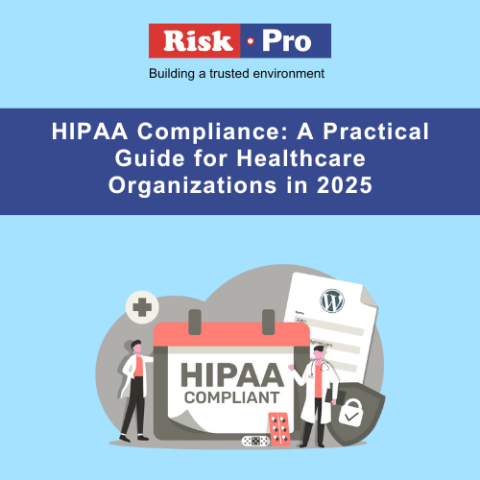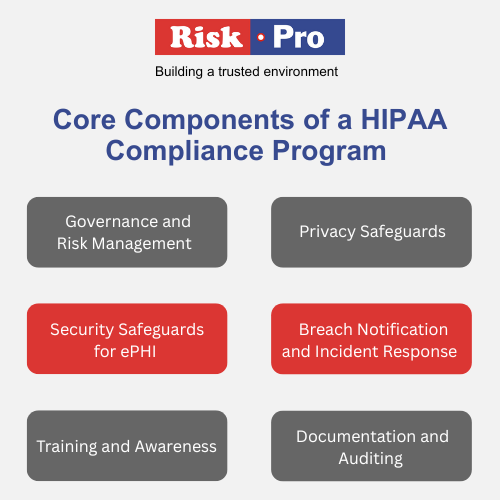
Introduction
In today’s data-driven healthcare landscape, HIPAA compliance isn’t just a regulatory checkbox—it’s a foundation for patient trust, data security, and operational resilience. Healthcare providers, health plans, and business associates must navigate a complex web of privacy rules, security safeguards, and breach response requirements. This guide breaks down HIPAA basics, why compliance matters, and practical steps to strengthen your program without overwhelming your team.
What is HIPAA and Why It Matters
The Health Insurance Portability and Accountability Act (HIPAA) sets national standards to protect sensitive patient information. It encompasses:
-
Privacy Rule: Protects individuals’ medical records and personal health information (PHI).
-
Security Rule: Requires administrative, physical, and technical safeguards for electronic PHI (ePHI).
-
Breach Notification Rule: Mandates timely notification to affected individuals and authorities after a breach.
-
Omnibus Rule: Updates, expands, and clarifies the above provisions, including business associate agreements (BAAs).
Why HIPAA compliance matters:
-
Patient trust: Demonstrates a commitment to safeguarding PHI.
-
Risk management: Reduces the likelihood and impact of data breaches.
-
Legal and financial protection: Avoids penalties, fines, and reputational damage.
-
Interoperability readiness: Aligns with industry standards for secure data exchange.
Key HIPAA Terminology You Should Know
-
PHI: Personal Health Information that identifies an individual.
-
ePHI: Electronic PHI stored or transmitted electronically.
-
BA: Business Associate who handles PHI on behalf of a covered entity.
-
BAA: Business Associate Agreement outlining responsibilities and safeguards.
-
PII: Personally Identifiable Information, a broader privacy term used in many contexts.
Core Components of a HIPAA Compliance Program
1) Governance and Risk Management
-
Establish a HIPAA governance framework with executive sponsorship.
-
Conduct a formal risk assessment to identify vulnerabilities in people, processes, and technology.
-
Maintain a written risk management plan with remediation timelines.
2) Privacy Safeguards
-
Limit PHI access to the minimum necessary to perform duties (Minimum Necessary Rule).
-
Implement consent and authorization procedures for disclosures beyond the permissible scope.
-
Maintain patient rights processes (access, amendment, accounting of disclosures).
3) Security Safeguards for ePHI
-
Administrative safeguards: risk assessments, workforce training, incident response planning.
-
Physical safeguards: secure facilities, access controls, device and media controls.
-
Technical safeguards: access controls (multi-factor authentication, least privilege), encryption, audit controls, integrity controls, and secure data transmission.
4) Breach Notification and Incident Response
-
Define an incident response plan with detection, escalation, containment, eradication, and recovery steps.
-
Establish timing and methods for breach notification to affected individuals and the Department of Health and Human Services (HHS) as required.
-
Maintain a breach log and perform post-incident reviews.
5) Training and Awareness
-
Ongoing HIPAA training tailored to roles (clinical, administrative, IT).
-
Phishing simulations and social engineering awareness.
-
Clear escalation paths for suspected PHI incidents.
6) Documentation and Auditing
-
Keep comprehensive policies and procedures (P&Ps) for all HIPAA domains.
-
Regularly review and update BAAs with business associates.
-
Conduct periodic internal and external audits, and remediate findings promptly.

Practical Steps to Strengthen HIPAA Compliance Today
-
Perform a comprehensive risk assessment: Map data flows, identify where PHI lives, and evaluate threats and vulnerabilities.
-
Encrypt sensitive data at rest and in transit: Use strong encryption standards for databases, backups, and communications.
-
Enforce strict access controls: Implement role-based access, MFA, and regular access reviews.
-
Secure BYOD and mobile devices: Implement device encryption, remote wipe capabilities, and clear usage policies.
-
Vet third-party vendors: Require BAAs, conduct due diligence, and monitor vendor risk.
-
Establish a robust incident response plan: Define roles, contact lists, playbooks, and tabletop exercises.
-
Train with purpose: Role-based HIPAA training that’s engaging and measurable (quizzes, certifications).
-
Prepare for audits: Maintain ready-to-review documentation and evidence of ongoing compliance activities.
Common HIPAA Myths Debunked
-
Myth: HIPAA bans all emails with PHI. Reality: PHI can be transmitted securely; use encryption and secure channels.
-
Myth: Breaches are always data theft—human error is a major risk too. Reality: Many incidents arise from misconfigured systems and leakage.
-
Myth: Small practices aren’t targets. Reality: Even small entities handle PHI and face penalties if noncompliant.
Measuring Success: HIPAA Compliance Metrics You Can Track
-
Number of access reviews completed per quarter.
-
Time to remediate identified vulnerabilities.
-
Percentage of employees trained on HIPAA within the specified period.
-
Incidents detected and responded to within defined SLAs.
-
Number of BAAs updated and renewed on schedule.
Conclusion
HIPAA compliance is an ongoing journey, not a one-time project. By embedding governance, privacy, security, and incident response into daily operations, healthcare organizations can protect patient trust while maintaining regulatory alignment. Start with a risk-focused assessment, prioritize critical safeguards, and foster a culture that views privacy and security as essential pillars of high-quality care.
